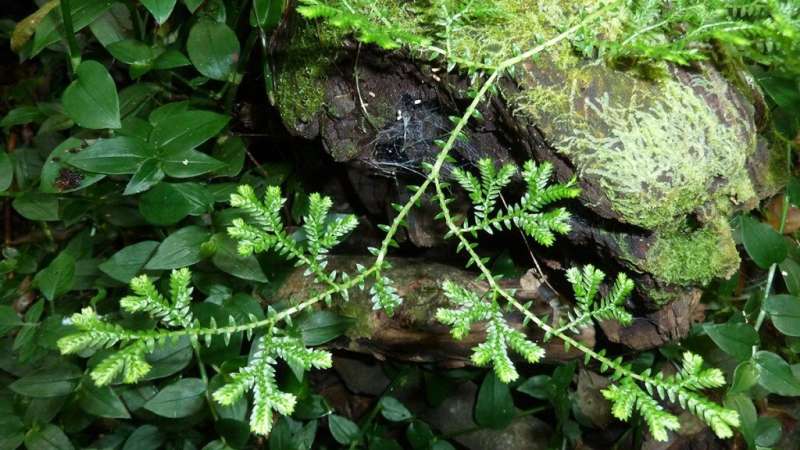Plants found to leave chemical fingerprints on an ozone-depleting gas

Methyl chloride (CH3Cl) is one of the most common chlorine-based gases in Earth’s atmosphere. Along with related chemicals, it depletes the ozone layer, exposing life on the planet to more of the sun’s ultraviolet radiation. The sources and processes that emit the gas and remove it from the atmosphere are still unclear.
In a new study published in the Journal of Geophysical Research: Biogeosciences, Hartmann and colleagues discovered that plants called royal ferns (Osmunda regalis) emit methyl chloride with an isotopic composition different from that emitted by industrial sources. Isotopes are different forms of the same chemical element with varying numbers of neutrons. Their analysis also revealed that another plant, called club moss, breaks down methyl chloride using an as yet undiscovered mechanism. Isotope analysis, they say, could help elucidate the distribution of the gas’s origins and removal.
The researchers first investigated methyl chloride production by the royal fern, which is common in temperate and subtropical regions and emits large amounts of methyl chloride. They collected and analyzed samples of royal ferns in a botanical garden in Germany.
They found that the proportions of carbon, hydrogen, and chlorine isotopes in methyl chloride produced by the royal ferns differed significantly from those produced by industrially manufactured methyl chloride.
Next, the researchers analyzed the isotopic composition of methyl chloride when it is broken down by club moss (Selaginella kraussiana). They discovered a unique isotopic pattern that differs from those produced by other methyl chloride–degrading plants, suggesting that club moss uses an unknown mechanism to process the gas.
These chemical fingerprints, the researchers say, could be used in future research to clarify inputs and removals of methyl chloride in the atmosphere.
More information:
S. Christoph Hartmann et al, Triple‐Element Stable Isotope Analysis of Chloromethane Emitted by Royal Fern and Degraded by Club Moss, Journal of Geophysical Research: Biogeosciences (2023). DOI: 10.1029/2022JG007256
This story is republished courtesy of Eos, hosted by the American Geophysical Union. Read the original story here.
Citation:
Plants found to leave chemical fingerprints on an ozone-depleting gas (2023, May 31)
retrieved 31 May 2023
from https://phys.org/news/2023-05-chemical-fingerprints-ozone-depleting-gas.html
This document is subject to copyright. Apart from any fair dealing for the purpose of private study or research, no
part may be reproduced without the written permission. The content is provided for information purposes only.
For all the latest Science News Click Here
For the latest news and updates, follow us on Google News.

